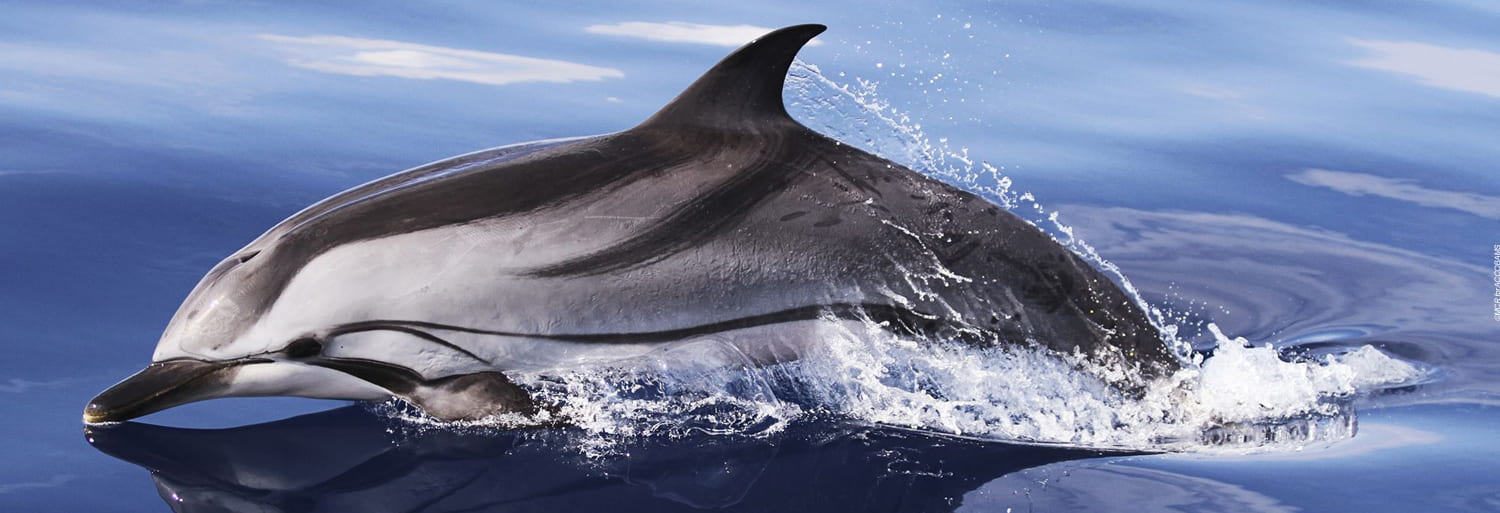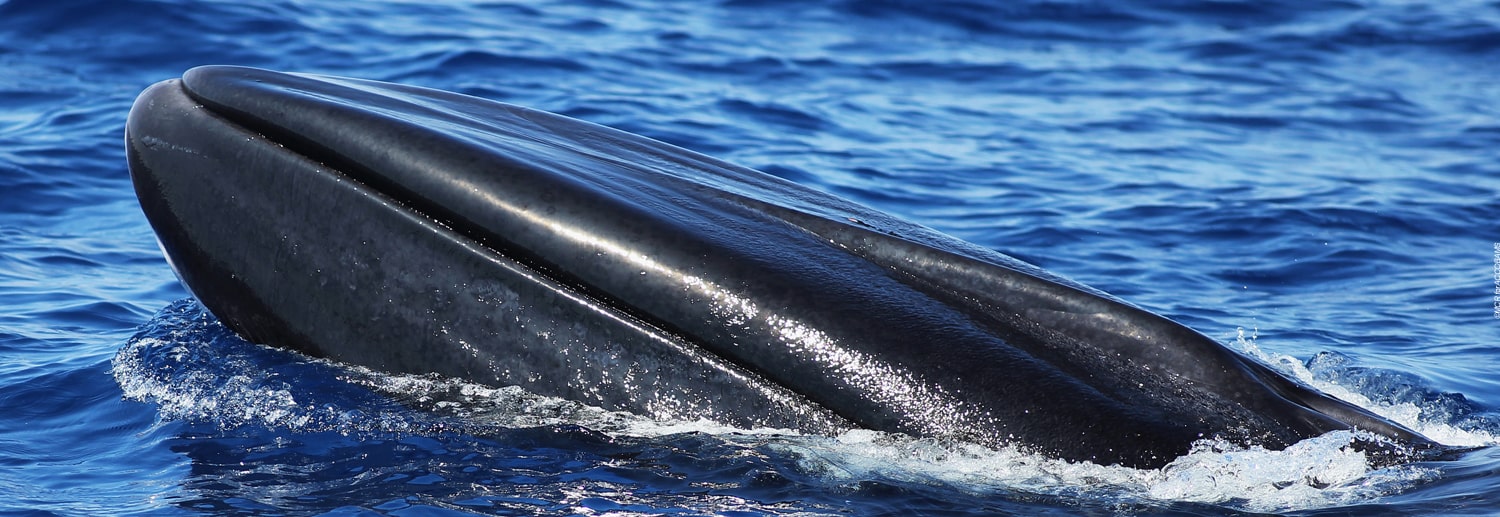New study on pollutants in Mediterranean dolphins
New research shows that dolphins in the northern Adriatic contain high levels of PCBs, highly toxic chemicals banned in the 1970s-1980s, and that females pass on their pollutant burden to their young. A new study, led by Morigenos – Slovenian Marine Mammal Society, was published in the journal Science of the Total Environment.
PCBs (polychlorinated biphenyls) are a group of man-made chemicals previously used in the manufacture of products including electrical equipment, flame retardants and paints. High exposure to PCBs is known to weaken animal immune systems and markedly reduce breeding success by causing abortions or high mortality in newborn calves. Even though their use has been banned for three decades, they are still present in the marine environment, and particularly in top marine predators such as dolphins.
An international team of researchers, led by Morigenos – Slovenian Marine Mammal Society from Piran, Slovenia, evaluated PCB and other organochlorine contaminants in bottlenose dolphins (Tursiops truncatus) living in the Gulf of Trieste (northern Adriatic Sea), the northernmost part of the Mediterranean Sea and one of the most human-impacted areas in the Mediterranean. The study involved Morigenos – Slovenian Marine Mammal Society (Slovenia), Sea Mammal Research Unit at the University of St Andrews (UK), Zoological Society of London’s Institute of Zoology (UK), Centre for Environment, Fisheries and Aquaculture Science (CEFAS, UK) and the Institute of Marine Sciences of the Italian National Research Council (Italy).
Overall, 87.5% of dolphins had PCB concentrations above the toxicity threshold for the onset of physiological effects in marine mammals, while 65.6% had concentrations above the highest threshold published for marine mammals based on reproductive impairment in seals. Such high contaminant levels are of concern particularly in combination with other threats to dolphins, including bycatch in fisheries, disturbance by boat traffic, marine litter, prey depletion, etc.
“We have been studying these dolphins for over 16 years, so we know most of them well. Through long-term re-sighting histories of identified individuals, we were able to link PCB levels in individual dolphins to parameters such as sex, reproductive output and social group membership.” said Tilen Genov from Morigenos, the lead author of the study and a PhD student at the University of St Andrews, UK.
The research showed that males have significantly higher pollutant concentrations than females. This is because females offload a substantial amount of their toxicological burden to their young through gestation and lactation. That is also why females that have not yet had calves had significantly higher concentrations than those that had previously produced at least one calf. Such results are expected based on our knowledge of mammal physiology, but it is not very common to demonstrate this phenomenon in wild whales and dolphins.
Dead animals stranded on shore are typically used for pollutant studies, but with such samples, one never knows exactly where and how the animals lived before washing up on shore. Furthermore, the decomposition may alter the pollutant concentrations in the tissues. On the other hand, because obtaining samples from live animals is not easy, many long-term observational studies of dolphins lack information on pollutants. Here, researchers were able to combine these two important aspects, as samples were collected from live dolphins of known identities, without capturing or harming them. While this isn’t the first research to do that, such studies remain relatively rare, especially in the Mediterranean Sea, the largest enclosed sea in the world, with substantial human pressure. With the largest sample size of live free-ranging animals in the Mediterranean Sea or Europe published for this species to date, this study provides valuable new information on pollutants in dolphins.
Dr Paul Jepson, co-author of the study and specialist wildlife veterinarian at Zoological Society of London’s Institute of Zoology, said: “This is another study showing high or very high levels of a very toxic and persistent pollutant – PCBs – in European dolphins. PCBs have the ability to cause diseases like cancer and can also suppress reproduction.”
Morigenos has been studying dolphins in the Gulf of Trieste and adjacent waters since 2002, looking at their population size and distribution, behaviour, social and genetic structure, and the effects of human activities on them.
Tilen Genov said: “Our previous research has also shown that these dolphin form distinct social groups, which behave differently and may have different diets. This implied that the amount of pollutants they accumulate may also differ because of the different food they eat. However, this study showed that they are all equally contaminated, regardless of potential differences in what they eat, and that PCBs are a problem for all of them.”
Dr Paul Jepson said: “The wider context is that much more needs to be done – across European countries – to clean-up the major sources of PCBs entering the marine environment. The Mediterranean Sea has some of the highest PCB exposures globally in dolphins and other wildlife species.”
Reference
Genov T., Jepson P.D., Barber J.L., Hace A., Gaspari S., Centrih T., Lesjak J., Kotnjek P. (2018) Linking organochlorine contaminants with demographic parameters in free-ranging common bottlenose dolphins from the northern Adriatic Sea. Science of the Total Environment. https://doi.org/10.1016/j.scitotenv.2018.12.025
The paper is freely available at the following link: https://authors.elsevier.com/a/1YBpcB8ccghjk
Morigenos
Morigenos – Slovenian Marine Mammal Society is an independent, scientific, non-profit, non-governmental organization that combines scientific research, monitoring, education, public awareness and capacity building to achieve effective conservation of the marine environment and biodiversity. “Morigenos” means “sea-born”. The organization was established in 2001 and is carrying out several projects in the field of scientific research, education, public awareness and conservation. The central activity of Morigenos is the long-term research, monitoring and conservation programme focusing on common bottlenose dolphins (Tursiops truncatus) in the Gulf of Trieste and adjacent waters in the northern Adriatic Sea. The research carried out by Morigenos over the past 16 years has shown that about 150 dolphins live here year-round, and provided detailed insight into their biology, ecology and conservation status. For more information, visit www.morigenos.org.
Use of Morigenos images and video
Photographs, video or graphics distributed by Morigenos to support this media release may only be used for editorial reporting purposes for the contemporaneous illustration of events, things or the persons in the image or facts mentioned in the media release or image caption, with a credit to Morigenos. Reuse of the picture or video requires further permission from Morigenos.





